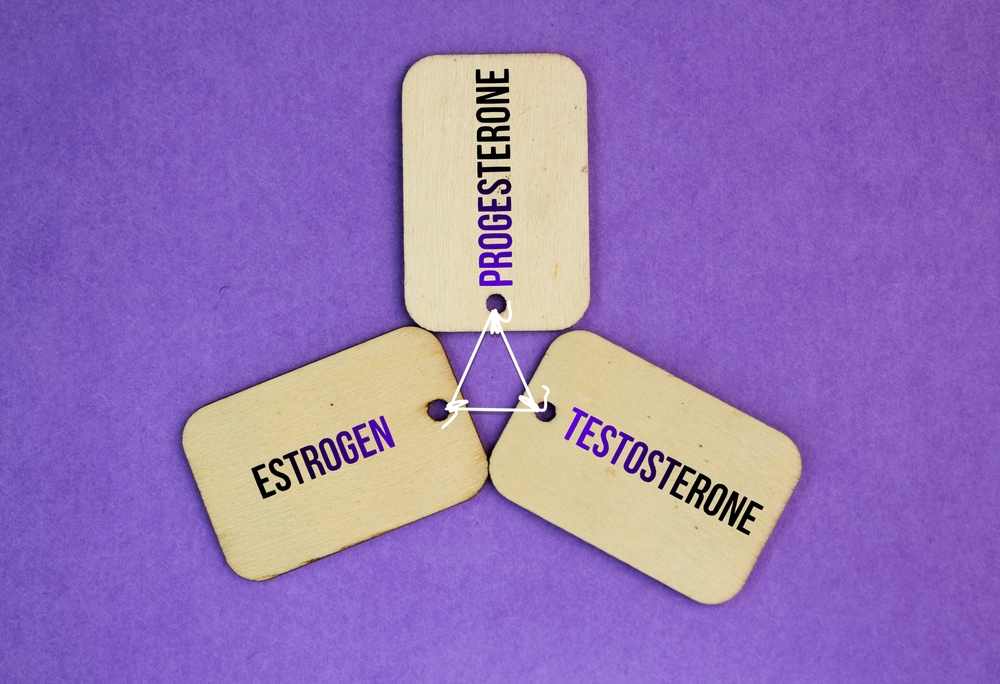Managing Menopausal Symptoms with Hormone Replacement Therapy
Menopause marks a pivotal stage in a woman’s life—an inevitable transition that can bring relief from some concerns, such as monthly menstrual cycles, but also presents new challenges. Hot flashes, night sweats, mood swings, and changes in bone density are just a few of the issues that many women face as they move through perimenopause and beyond. For some, these symptoms are mild and manageable with simple lifestyle adjustments. For others, they can be debilitating. Over the last several decades, hormone replacement therapy (HRT) has become a widely discussed and often recommended approach to help women manage the often-frustrating symptoms of menopause. However, as with any medical intervention, it is important to understand the therapy’s benefits, risks, and the role it can play in overall well-being. This comprehensive guide will explore menopause and its effects on the body, dig into how HRT can be used to ease specific symptoms, address the controversies and concerns surrounding treatment, and provide guidance on how you might evaluate whether hormone replacement therapy is right for you.
Understanding Menopause
Menopause is a natural biological process, not a medical condition. It begins when a woman’s ovaries gradually decrease the production of estrogen and progesterone, two key reproductive hormones. While the onset varies from person to person, menopause typically occurs in the late 40s or early 50s, though it can start earlier or later due to various genetic, medical, or lifestyle factors.
Perimenopause
Before menopause officially sets in, there is a transition period called perimenopause. This stage can begin several years before the final menstrual period and involves fluctuating hormone levels. During perimenopause, you might experience:
- Irregular Periods: Cycles can lengthen, shorten, or become unpredictable.
- Hot Flashes and Night Sweats: Fluctuations in estrogen levels can cause sudden feelings of intense heat, sometimes accompanied by sweating and rapid heartbeat.
- Mood Changes: Shifts in hormones can contribute to irritability, anxiety, and depressive episodes.
- Sleep Disturbances: Insomnia or interrupted sleep caused by night sweats can exacerbate mood swings and fatigue.
- Changes in Libido: Decreased hormone levels can contribute to diminished sexual desire and vaginal dryness.
Menopause
Officially, menopause is diagnosed 12 months after a woman’s final menstrual period. At this point, the ovaries have significantly decreased their production of estrogen and progesterone. Beyond these fundamental changes, other shifts, such as bone density decrease and metabolic changes, can also become more prominent.
Postmenopause
In the years after menopause, symptoms like hot flashes often start to subside, but other risks, such as osteoporosis and cardiovascular disease, can increase. Hormone replacement therapy, coupled with a healthy lifestyle, may support long-term health during this phase.
The Impact of Hormone Levels on Health
The body’s balance of hormones is crucial for overall health. Estrogen supports the health of various tissues and organs, including the skin, bones, and cardiovascular system. When estrogen levels dip sharply, it can have widespread effects:
- Bone Health: Estrogen helps maintain bone density. With lower estrogen levels, women may become more vulnerable to osteoporosis and fractures.
- Cardiovascular Health: Estrogen offers a protective effect on the cardiovascular system, influencing cholesterol levels and artery function. Declining estrogen levels can raise the risk of heart disease.
- Vaginal and Urinary Health: Estrogen also plays a role in maintaining moisture and elasticity in the vaginal and urinary tracts. Low levels can result in dryness, discomfort, and an increased risk of urinary infections.
What Is Hormone Replacement Therapy?
Hormone Replacement Therapy (HRT) involves supplementing the body with hormones—primarily estrogen, and sometimes progesterone—to offset the natural decline that occurs during menopause. There are various forms of HRT, including pills, patches, creams, gels, and injections. Some regimens incorporate both estrogen and progesterone (often termed Combined HRT), whereas others use estrogen only (Estrogen-only HRT).
Why combine progesterone with estrogen?
Women who still have a uterus typically need to include progesterone in their HRT regimen to counterbalance estrogen’s effects on the uterine lining. Unopposed estrogen (i.e., taking estrogen without progesterone) can lead to an overgrowth of the lining and increase the risk of uterine cancer. Women who have had a hysterectomy often do not need progesterone and may take estrogen alone.
Benefits of Hormone Replacement Therapy
- Reduction of Hot Flashes and Night Sweats
Estrogen therapy is considered one of the most effective treatments for vasomotor symptoms like hot flashes and night sweats. These sudden, intense surges of heat can be disruptive, particularly at night, leading to insomnia and fatigue. By stabilizing estrogen levels, HRT can help reduce the severity and frequency of these episodes, often leading to better sleep. - Improved Vaginal Health
Estrogen therapy can help restore the normal functioning of vaginal tissues, alleviating issues such as dryness, itching, and painful intercourse. Localized treatments (like vaginal estrogen creams or rings) can specifically target these symptoms, offering relief without significantly affecting the entire body’s hormone levels. - Bone Density Maintenance
One of the most significant risks post-menopause is osteoporosis. Because estrogen helps maintain bone density, HRT can slow bone loss and reduce the likelihood of fractures, particularly in the hips and spine. - Possible Mood Stabilization
Changes in hormone levels can impact mental health and mood regulation. Estrogen may have a protective effect on neurotransmitters that regulate mood. While more research is needed, many women report improved emotional well-being with HRT. - Enhanced Quality of Life
For women who experience debilitating menopausal symptoms, the overall improvement in comfort, sleep, and daily functioning brought about by HRT can be life-changing. By managing these uncomfortable symptoms, many find they can better focus on other areas of life, from careers to personal relationships.
Potential Risks and Controversies
While HRT offers significant benefits, it also brings about questions and controversies. It’s crucial to consult a qualified healthcare professional who can help you weigh risks against rewards based on your unique health status and family history.
- Breast Cancer Risk
Research shows that long-term combined HRT (estrogen + progesterone) might increase the risk of breast cancer, especially if used for over five years. The relationship is complex and depends on various factors like age at initiation, duration of therapy, and overall health status. For some individuals, the benefits outweigh the risk; for others, alternative approaches may be recommended. - Cardiovascular Concerns
Studies have reported mixed findings regarding HRT and cardiovascular health. Some data suggest that starting HRT close to the onset of menopause may offer cardiovascular benefits, while initiating therapy many years post-menopause could come with a higher risk of heart disease or stroke. Personalized evaluation is essential to determine timing and type of HRT. - Blood Clots
Estrogen can increase the risk of blood clots, which might lead to deep vein thrombosis (DVT) or pulmonary embolism (PE). This risk might be higher with oral forms of estrogen compared to transdermal forms like patches or gels, which bypass the liver and may reduce the clotting risk. - Endometrial Cancer
Estrogen-only HRT can raise the risk of endometrial (uterine) cancer in women who haven’t had a hysterectomy. When combined with progesterone, the risk is significantly mitigated. - Individual Variation
Each woman’s situation is different. Factors such as family history, personal medical history, and lifestyle choices (e.g., smoking, alcohol consumption, diet, exercise) can influence both symptom severity and risk profile. There is no one-size-fits-all approach.
Types of Hormone Replacement Therapy
Understanding the various options can help you and your healthcare provider customize a plan that addresses your specific needs and health status.
- Systemic Estrogen Therapy
- Pills: Oral medications are widely used and convenient but can carry a slightly higher risk of blood clots.
- Patches: Wearable patches slowly release estrogen into the bloodstream. They may reduce the risk of blood clots compared to oral forms.
- Creams and Gels: Applied to the skin, these formulations also avoid the liver’s first-pass metabolism.
- Combined Estrogen and Progesterone Therapy
- Cyclic Regimens: Mimics a menstrual cycle, with estrogen taken daily and progesterone added for a portion of the month. This can cause a monthly “withdrawal bleed.”
- Continuous Combined Regimens: Estrogen and progesterone are taken together daily, often leading to no bleeding after an adjustment period.
- Local (Vaginal) Hormone Therapy
- Creams, Rings, or Tablets: Primarily focus on alleviating local symptoms like vaginal dryness and discomfort during intercourse. Minimal amounts of hormone enter the bloodstream, which generally reduces systemic risks.
- Bioidentical Hormones
- Plant-Derived: These compounds are chemically identical to the hormones produced by the human body. They can be prescribed in standard doses or custom-compounded forms, though their safety and efficacy still need more research.
- Controversies: Some people argue that bioidentical hormones are “safer,” but professional medical bodies like the FDA have pointed out that any hormone—bioidentical or synthetic—carries potential benefits and risks.
Lifestyle Adjustments to Enhance HRT or Reduce the Need for It
While hormone replacement therapy can offer relief, lifestyle measures often play a critical role in managing menopausal symptoms. Adopting healthy habits—either alongside HRT or as an alternative—may improve overall well-being and mitigate discomfort.
- Dietary Choices
- Calcium and Vitamin D: Aim for adequate intake of these nutrients to support bone health. Dairy products, green leafy vegetables, and fortified cereals can help.
- Phytoestrogens: Foods like soy, flaxseeds, and legumes contain plant-based estrogen-like compounds that may ease mild symptoms.
- Limit Alcohol and Caffeine: These can trigger or worsen hot flashes and disturb sleep patterns.
- Exercise and Physical Activity
- Aerobic Exercise: Engaging in consistent cardio workouts (walking, running, cycling, or swimming) helps maintain cardiovascular health and manage weight.
- Strength Training: Lifting weights or doing bodyweight exercises supports bone density, which is crucial at this stage of life.
- Yoga and Stretching: Mind-body practices can help reduce stress, improve balance, and promote flexibility.
- Stress Management
- Relaxation Techniques: Activities such as meditation, deep breathing, or guided imagery can alleviate mood swings and anxiety.
- Quality Sleep: Aim for 7-9 hours each night. A calming bedtime routine, a cool bedroom environment, and limiting screen time before sleep can help diminish night sweats and insomnia.
- Maintain a Healthy Weight
- Balanced Diet & Regular Activity: Excess weight can exacerbate hot flashes and raise the risk of heart disease. By maintaining a healthy weight, you may reduce the severity of menopausal symptoms.
- Stay Hydrated
- Water Intake: Drinking enough water throughout the day can ease dryness and help regulate body temperature.
- Limit Sugary Beverages: High-sugar drinks can cause energy spikes and crashes, impacting mood and overall health.
Who Should Consider Hormone Replacement Therapy?
Not every woman with menopausal symptoms will need HRT. Determining whether it’s the right choice depends on multiple factors:
- Symptom Severity
If hot flashes, night sweats, mood swings, or vaginal dryness are significantly impacting your quality of life, HRT could be beneficial. - Early Menopause or Premature Ovarian Failure
Women who experience menopause before the age of 40 are at a higher risk for long-term effects like osteoporosis. HRT might offer substantial protective benefits in these situations. - Family and Personal Medical History
Women with a personal or family history of osteoporosis or other risk factors (e.g., fractures, low bone density) might find HRT helpful in maintaining bone health.
However, if your family or personal history includes breast or endometrial cancer, you may need to explore alternative therapies. - Age and Timing
Research suggests that starting HRT around the time menopause begins may be more beneficial and carry fewer risks than starting later in life. Women who begin therapy more than 10 years after menopause onset may see less benefit and potentially more risk.
How Long Should You Use HRT?
There’s no single answer to how long a woman should stay on HRT, as it depends on the individual’s goals and risk profile. In general:
- Short-Term Use: Many doctors recommend using the lowest effective dose for the shortest duration needed to manage symptoms.
- Long-Term Use: In cases of severe osteoporosis risk or persistent symptoms, prolonged therapy may be considered, provided that risks are regularly re-evaluated.
Regular medical checkups are essential for monitoring how your body responds and for determining whether continuing HRT is still the most appropriate course of action. Blood tests, bone density scans, and regular screenings (such as mammograms) can help guide adjustments to dosage or type of therapy.
Personalized Approaches to Menopausal Care
Because every woman experiences menopause differently, personalized care is key. Here are some ways to ensure that your treatment plan meets your unique needs:
- Thorough Consultation
Find a healthcare provider who will take the time to understand your medical history, lifestyle, and personal preferences. Clear communication is essential. - Informed Decision-Making
Request information about all possible risks and benefits. Don’t hesitate to seek a second opinion if you feel unsure. - Combination Treatments
Sometimes, a balanced approach includes both HRT and non-hormonal strategies. For instance, you might use a low-dose patch to address severe hot flashes while incorporating local estrogen cream to tackle vaginal dryness. - Regular Monitoring
Consistent follow-up appointments ensure that you and your provider can adjust your regimen as needed. Hormone levels, blood pressure, cholesterol, and bone density should be evaluated periodically. - Lifestyle Integration
Remember that HRT is not a panacea. Combining therapy with sensible dietary choices, regular exercise, stress management, and other healthy habits is often the most effective way to achieve an optimal sense of well-being.
Dispelling Common Myths about HRT
- “HRT is only for women with severe symptoms.”
While many women turn to HRT for intense hot flashes or night sweats, mild symptoms that interfere with quality of life can also be addressed. It’s a personal decision based on what feels most comfortable and beneficial. - “HRT causes massive weight gain.”
Some women report slight changes in weight distribution or mild weight gain. However, more often, menopause itself brings shifts in metabolism. Maintaining a balanced diet and exercise routine is crucial, with or without HRT. - “You must stay on HRT forever once you start.”
Many women use HRT only during the most challenging years of menopausal transition. Regular consultations with your healthcare provider help you decide when or if you should taper off therapy. - “Natural supplements are always safer than prescription HRT.”
“Natural” doesn’t automatically mean safe. Over-the-counter supplements are not as rigorously regulated, and their efficacy in addressing menopausal symptoms is often supported by limited evidence. Always consult a healthcare professional before adding any supplement to your regimen. - “HRT is purely about symptom control.”
Beyond relieving hot flashes, HRT may help protect bone density and reduce the risk of osteoporosis when used at the right time and for the right duration. This multi-faceted impact makes it beneficial for some women from both a short-term and long-term perspective.
Points to Discuss With Your Healthcare Provider
Before starting HRT, having a detailed discussion with a qualified healthcare provider is crucial:
- Medical History Review: Share any history of blood clots, cancer, cardiovascular issues, or other chronic conditions.
- Family History: Inform your provider about relatives who have experienced breast cancer, osteoporosis, or heart disease.
- Symptom Assessment: Discuss the frequency, intensity, and impact of your menopausal symptoms.
- Lifestyle Factors: Be transparent about smoking, alcohol use, exercise habits, and diet.
- Possible Interactions: List any supplements, vitamins, or over-the-counter medications you’re taking.
- Goals and Expectations: Do you want short-term relief, long-term preventative benefits, or both?
When Non-Hormonal Options Might Be Better
HRT isn’t suitable for everyone. Certain conditions or risk factors can make hormone therapy a less favorable option:
- Active or Recent Cancer: Especially breast or endometrial cancer.
- History of Blood Clots or Stroke: Estrogen can heighten the risk.
- Severe Liver Disease: Oral medications, in particular, can place additional stress on the liver.
- High Risk of Cardiovascular Disease: Depending on your risk profile, HRT might need careful consideration or avoidance.
Non-hormonal medications like selective serotonin reuptake inhibitors (SSRIs) can ease hot flashes and mood disturbances for women who cannot or prefer not to use hormones. Cognitive Behavioral Therapy (CBT) has shown promise in managing menopause-related anxiety and depression. Likewise, local lubricants and moisturizers can alleviate vaginal dryness without systemic hormone exposure.
Looking Ahead: Holistic Menopausal Care
Menopause is more than just the end of menstruation; it’s a phase of life that can bring both challenges and opportunities. For many women, hormonal changes can create discomfort, disrupt daily life, and raise long-term health concerns. The good news is that, today, we have more resources at our disposal than ever before. Whether you choose HRT, complementary therapies, or a combination of various approaches, taking charge of your health during this transition can lay the groundwork for a fulfilling post-menopausal life.
Staying informed and proactive is paramount. Seek reliable information and talk to trusted medical professionals. Incorporate healthy habits, manage stress, and keep an open mind to the variety of options available to you. For many women, HRT can be a piece of the puzzle—an integral component that eases symptoms, supports bone health, and helps maintain overall quality of life. But like any healthcare decision, it demands personalized assessment, ongoing monitoring, and a commitment to balanced living.
HRT In Parker Colorado
Navigating menopause can often feel like a winding road, filled with surprises and challenging symptoms that seem to pop up at the most inopportune times. Fortunately, you do not have to take that journey alone or unprepared. Hormone replacement therapy, when thoughtfully administered and closely monitored, offers many women significant relief from symptoms such as hot flashes, night sweats, mood swings, and decreased bone density. Beyond that, it can provide renewed energy and improved overall well-being, allowing you to focus on the pursuits and passions that truly matter in your life.
However, it’s essential to remember that HRT is not a universal solution for every woman. The decision to start therapy should be made only after thoughtful consideration of your individual risk factors, health goals, and personal preferences. It’s a conversation best had with a healthcare professional who understands the complexities of menopause and respects your unique needs. Together, you can craft a plan that might include hormone replacement therapy, lifestyle modifications, and supplemental treatments that align with your long-term health objectives.
If you’re ready to take the next step in your menopausal journey or if you simply want more information on how to reclaim control of your body during this transition, professional guidance is invaluable. You deserve personalized, expert care that helps you understand your options and make confident decisions about your health.
Take the first step toward feeling like yourself again: Contact Apex Hormone Health in Parker, Colorado, today. Their dedicated team of specialists provides comprehensive evaluations, personalized treatment plans, and the compassionate support you need to navigate menopause with peace of mind. Whether you’re experiencing mild symptoms or are overwhelmed by severe discomfort, you don’t have to face this transition alone. Reach out to Apex Hormone Health and discover how a tailored approach to hormone replacement therapy can help you live your life to the fullest.







